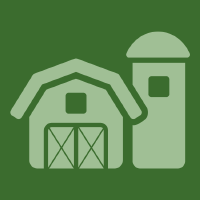Topic Menu
► Topic MenuTopic Editors



Metrology-Assisted Production in Agriculture and Forestry

Topic Information
Dear Colleagues,
According to the Food and Agriculture Organization of the United Nations, climate change will negatively affect food security and create additional pressure on freshwater resources. Thus, a novel scientific endeavor must provide reliable, robust, and applicable management practices that can ensure the sustainability and increase the resilience of the agricultural and forestry sectors to the impacts of climate change whilst accounting for and protecting the sustainability of the environment and its resources. For instance, having spatiotemporal information on soil moisture is key in the decision-making processes of farmers and growers. These can define, for example, when a field can be driven on, when and how much irrigation should be applied, and when the use of fertilizers or pesticides is advisable or necessary. This information can also help farmers provide estimates of when the harvest period will be and how large the anticipated yield will be. The planning and execution of such operations would benefit from an increased availability of real-time data and/or forecasts on the development of soil moisture, soil temperature, meteorological quantities, crop water requirements, and the availability of water resources. To this end, modern agriculture and forestry are becoming more and more data-driven, and the adoption of sensor technology, data acquisition services, and advanced data processing and analysis capabilities is a key factor for the simultaneous increase in the sustainability and productivity of agricultural and forestry operations. This topic plans to give an overview of the most recent advances made in the field of metrology-assisted production in agriculture and forestry and their applications in diverse areas. Potential topics include, but are not limited to:
- Agriculture and forestry environmental monitoring;
- Metrology-assisted production in agriculture and forestry;
- New sensors and associated signal conditioning for agriculture and forestry;
- Sensor calibration methods for environmental applications;
- Tests of sensor performance and telemetry protocols;
- Model-based forecasts for agriculture and forestry management.
Dr. Heye Bogena
Dr. Cosimo Brogi
Prof. Dr. Christof Huebner
Dr. Andreas Panagopoulos
Topic Editors
Keywords
- agriculture and forestry environment monitoring
- metrology-assisted production in agriculture and forestry
- sensors and associated signal conditioning for agriculture and forestry
- sensor calibration methods for environmental applications
- tests of sensor performance and telemetry protocols
- model-based forecasts for agriculture and forestry management
Participating Journals
| Journal Name | Impact Factor | CiteScore | Launched Year | First Decision (median) | APC | |
|---|---|---|---|---|---|---|

Agriculture
|
3.6 | 3.6 | 2011 | 17.7 Days | CHF 2600 | Submit |

Forests
|
2.9 | 4.5 | 2010 | 16.9 Days | CHF 2600 | Submit |

Sensors
|
3.9 | 6.8 | 2001 | 17 Days | CHF 2600 | Submit |

MDPI Topics is cooperating with Preprints.org and has built a direct connection between MDPI journals and Preprints.org. Authors are encouraged to enjoy the benefits by posting a preprint at Preprints.org prior to publication:
- Immediately share your ideas ahead of publication and establish your research priority;
- Protect your idea from being stolen with this time-stamped preprint article;
- Enhance the exposure and impact of your research;
- Receive feedback from your peers in advance;
- Have it indexed in Web of Science (Preprint Citation Index), Google Scholar, Crossref, SHARE, PrePubMed, Scilit and Europe PMC.

